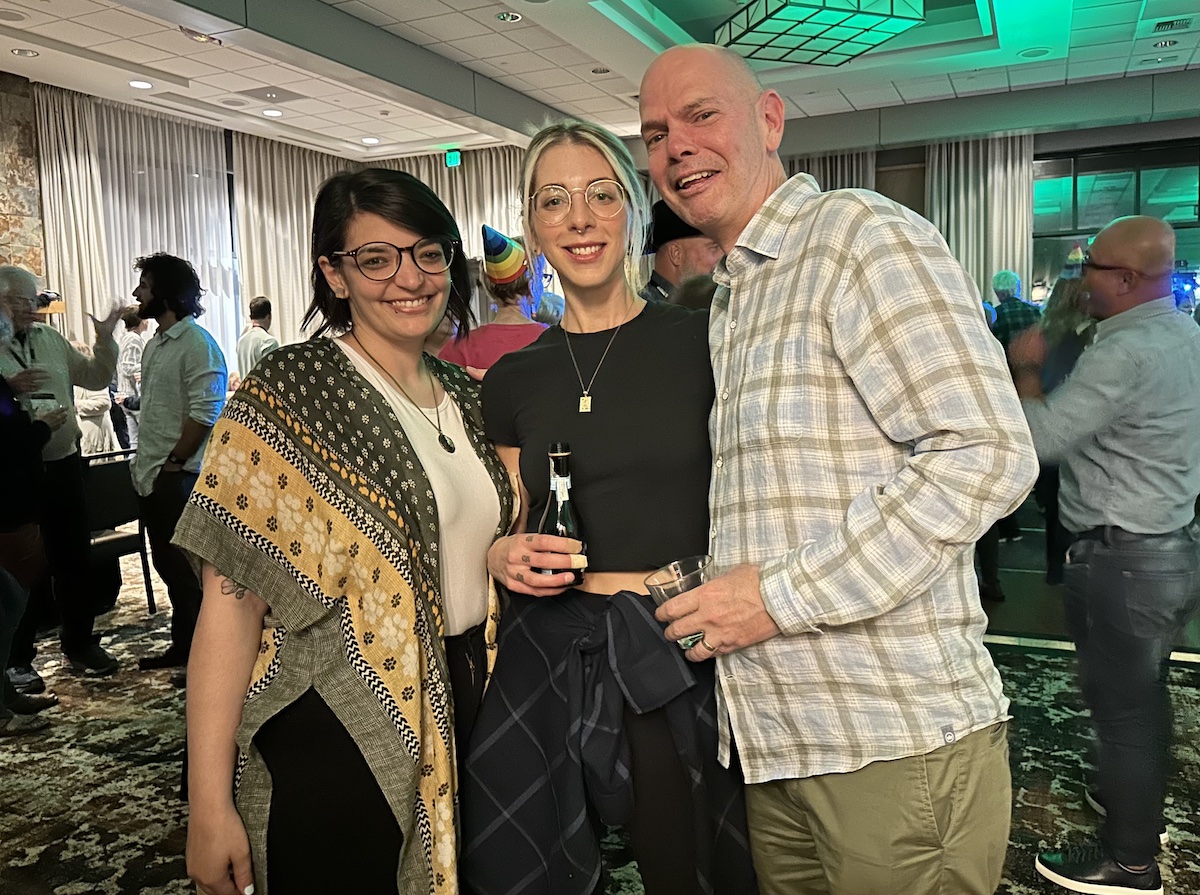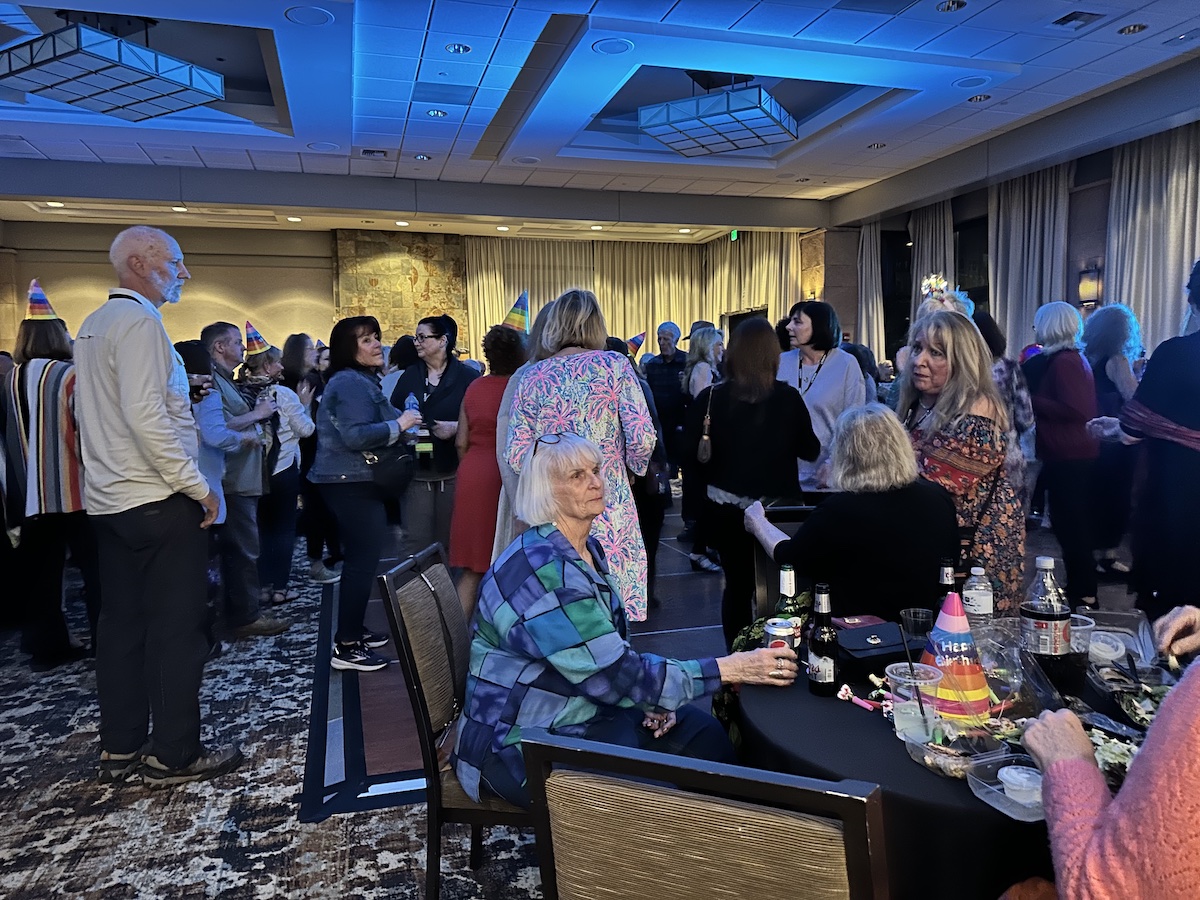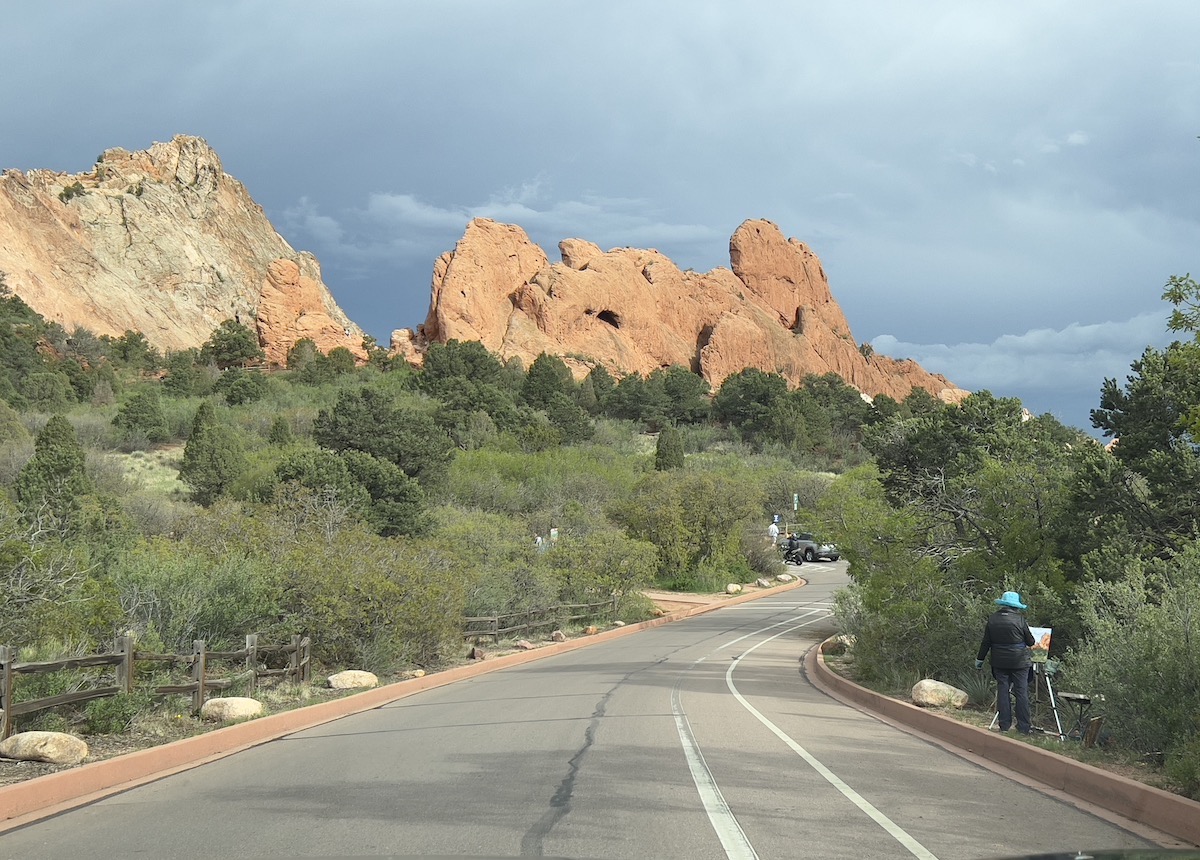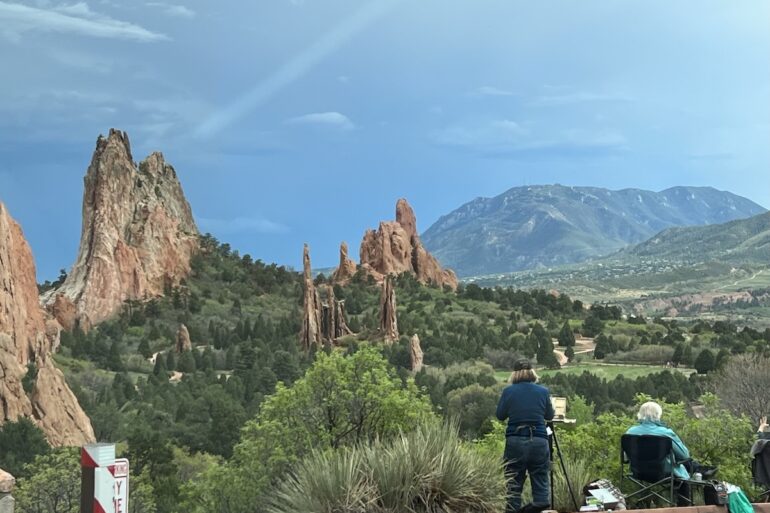
This post is also available in:

From the verdant nature of The City of Golden and Eldorado National Park to the sedimentary rock formations of the “Garden of Gods”: the penultimate stop of the Plein Air Convention and Expo (PACE).
Garden of Gods is an extraordinary nature park characterized by red-colored and uniquely textured rocks among which emerges, at the southern end of the Park, the “Balanced Rock”: a peculiar formation due to erosive processes that, by removing the softer layers near the base, have allowed the seemingly precarious appearance to emerge, which so fascinates tourists but especially artists, bewitched by its breathtaking beauty.
The feature, which unites the PACERS and is the common thread in the choice of location by the organizers of Streamline Publishing, is the search for unspoiled and protected naturalistic corners, in which the participants put into practice the information acquired during the demonstration sessions, painting under the supervision of the faculty members: distinguished by the characteristic pink cap and red flag, who are always on hand for anything.
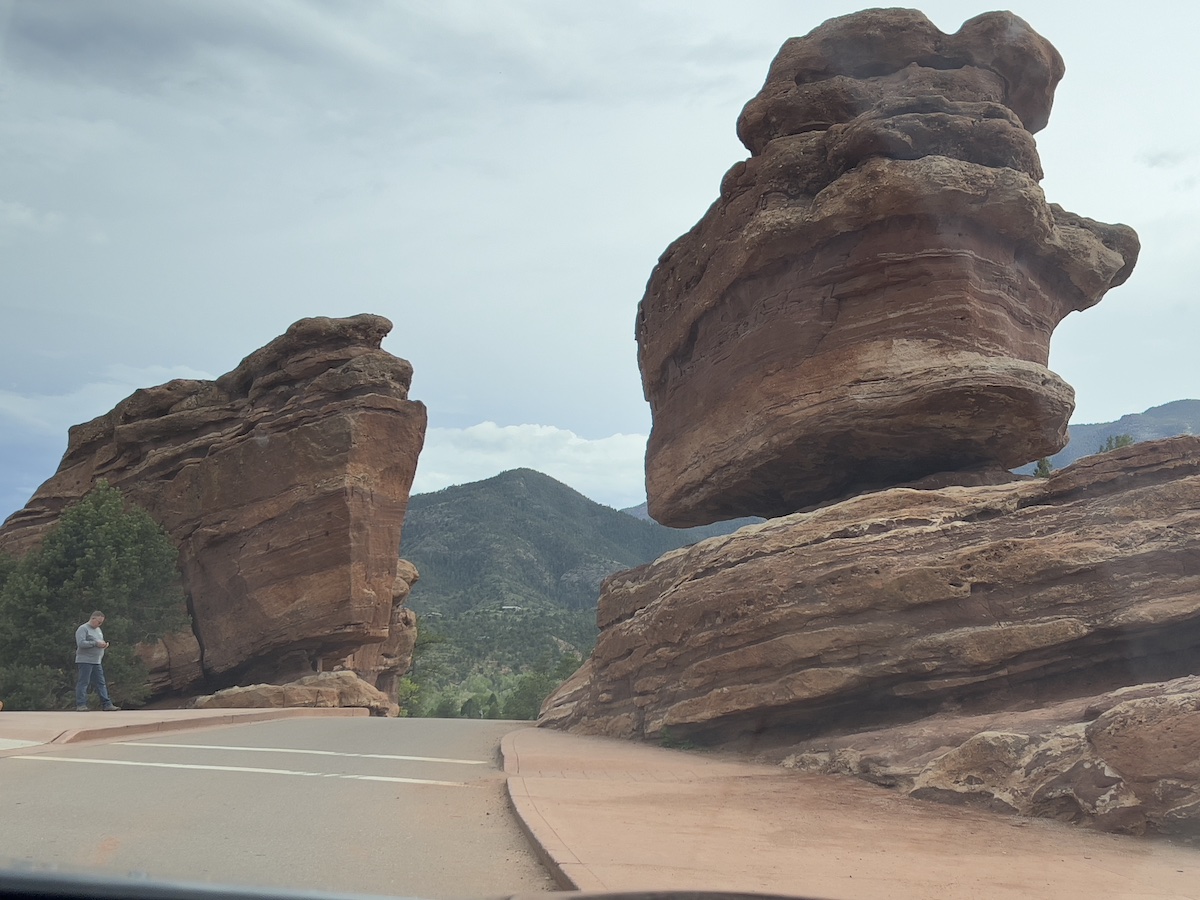
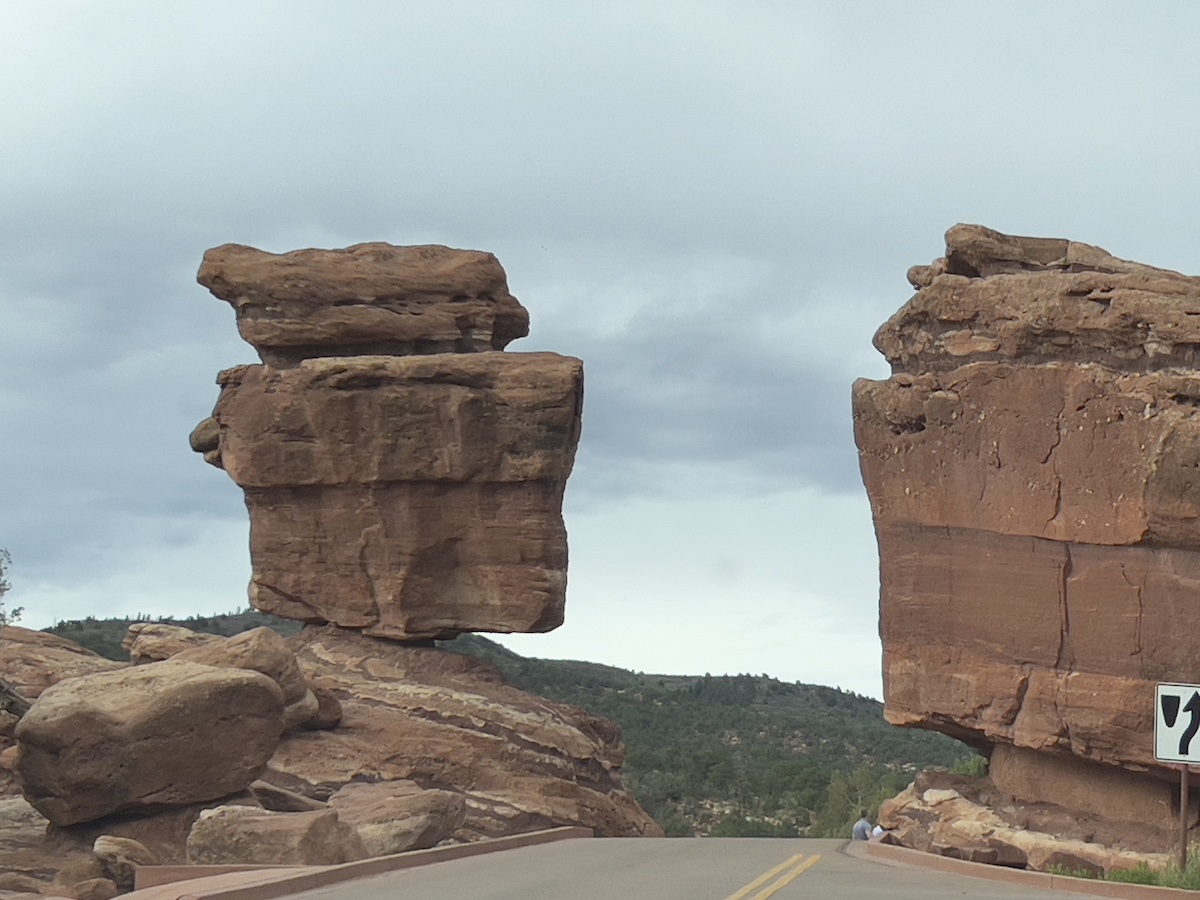
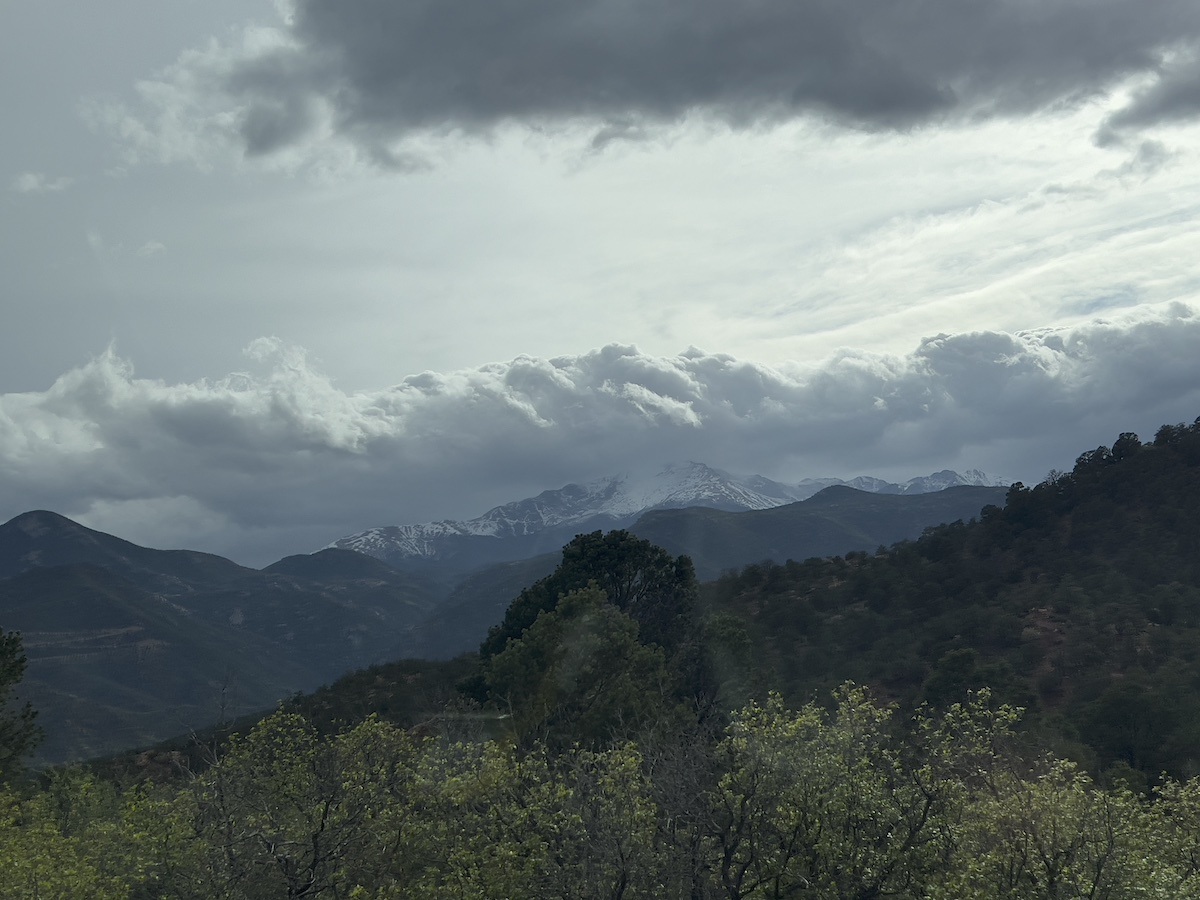
The outdoor outings are always preceded by demonstration sessions that aim to highlight both the general compositional principles of plein air painting and the particular themes that characterize the landscape of the afternoon outside painting.
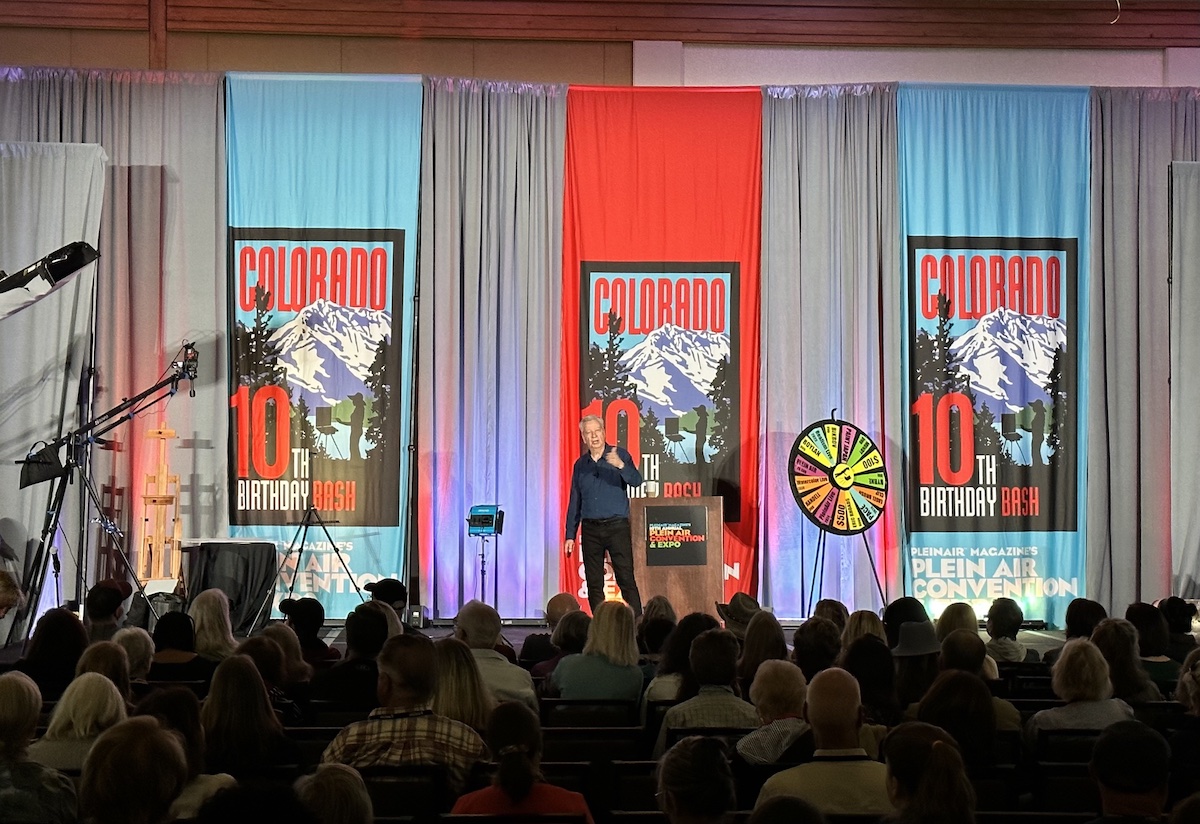
Don Demers in the daily demonstration made from an underpainting highlighted the beauty of water breaking against rocks and capturing, with its power, the interest of landscape artists characterized by a particular sensitivity to nature.
Emphasizing how important it is to pay attention to the less “familiar” aspects of composition Demers said that to fully capture the beauty of the scene it is necessary to surrender to the flow of energy with which the scene captures the artist’s attention. An approach adopted in his time by John Constable and William Turner and which made their compositions eternal.

Trees, like rocks are compositional elements that can be made in a thousand different ways depending on the artist’s sensibility or the need to emphasize the focal point around which the story unfolds. Watercolorist Michael Holter, aided by the presentation of some slides of his works, pointed out how compositional design, tonal and color values, and edges, lend themselves in the rendering of different compositional interpretations. However, the element that most influences the compositional narrative of the story according to Holter is always light, which changes in relation to the perspective adopted by the artist. Perspective, which can be: aerial perspective understood as the distance between compositional elements; linear perspective determined by the vanishing point; and what he calls “solid perspective,” consisting of the contrast between light and shadow created by the direction of the light and offering the three-dimensionality of the compositional element.
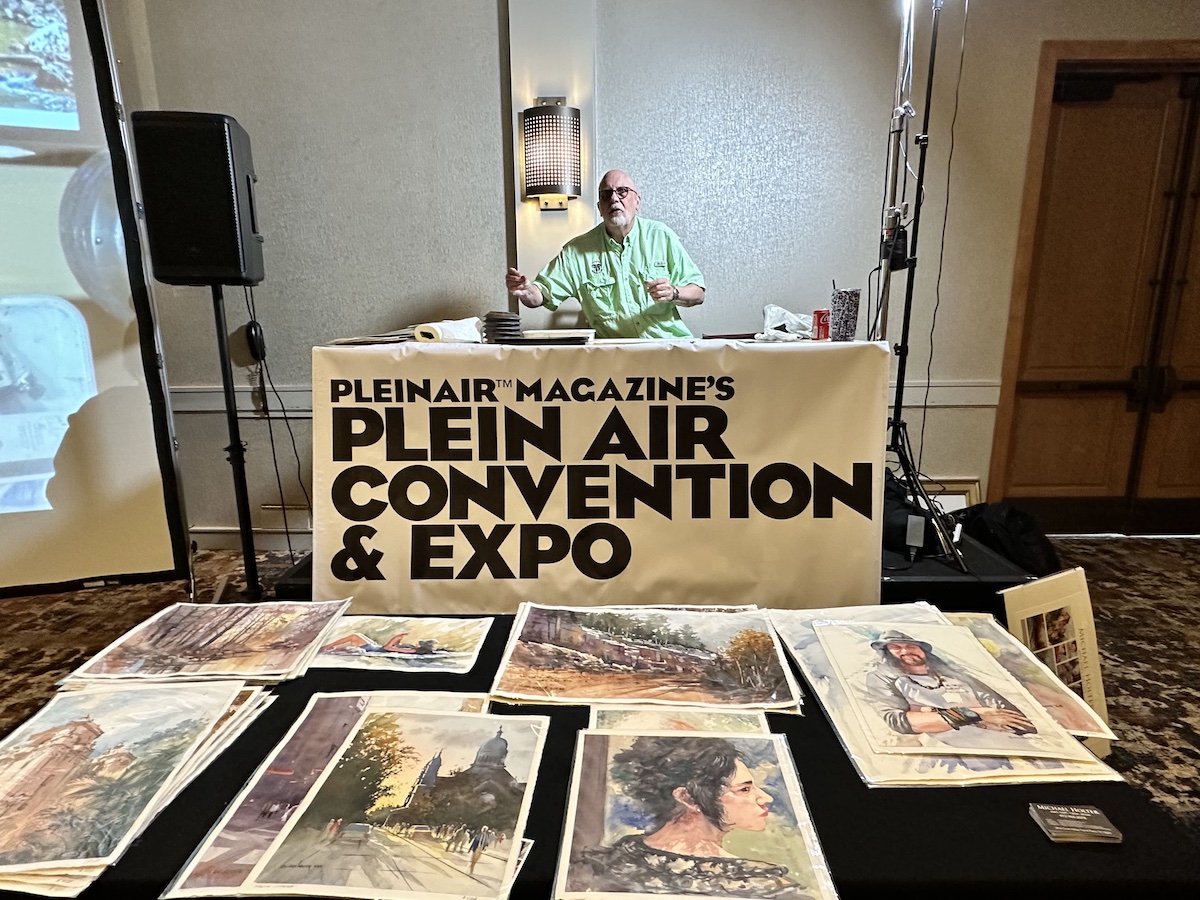
Artist Raj Chauduri, starting with the organization of colors arranged in an organized and distinct manner on the palette, demonstrated how there are no particular rules to follow in approaching landscape composition that can vary with light or dark colors depending on the atmosphere to be painted and can be more or less bright. What is important declares Chaudhuri is to respect the cardinal concepts that govern the compositional harmony of colors: hue, chroma and value.
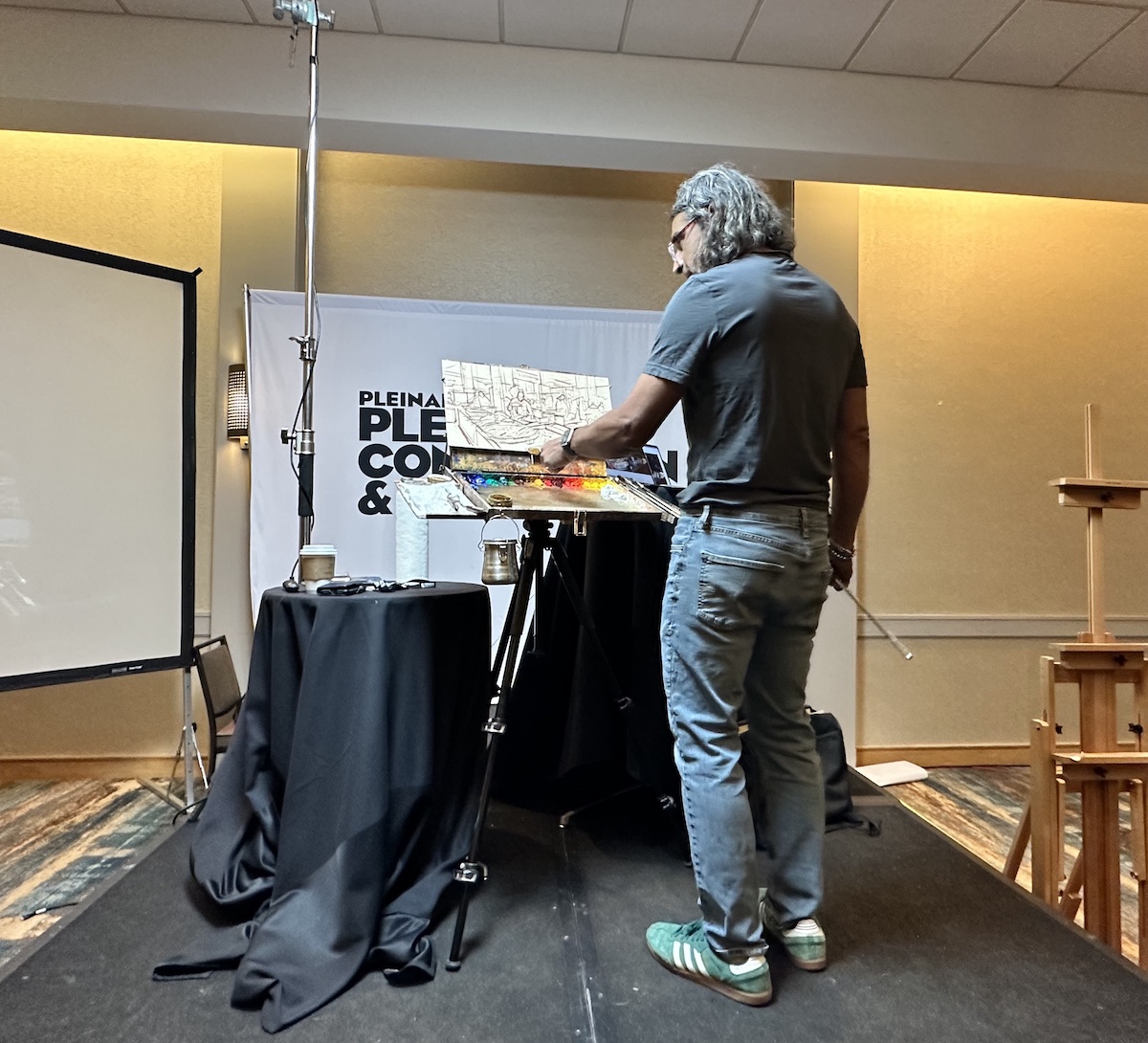
Lori Putnam, the light artist who has been the protagonist of several demonstration sessions focusing on the ‘importance of light-which is the basis of plein-air painting- made a composition based on the photographic image and on a previously made work that she replicated by showing the compositional process from beginning to end, explaining it in great detail and with her characteristic humor. Recounting anecdotes and vicissitudes of lived life Putnam mentioned, among the artists who influenced her, Everett Raymond Kinstler who, despite being an internationally renowned portrait painter, supported -practicing with rigor and constancy- the importance of live painting which he considered the only tool capable of offering the basis of observation.
Observation that, according to Putnam, must be rigorous and untainted by the set of preconceptions that the human brain -based on historical memory- provides. In her compositional process, she stated that she proceeds by working on the whole composition simultaneously without focusing exclusively on one area at a time. Another point of reference for Putnam was the “meditative” painter Quang-Ho who stated that the only rule to follow in the compositional process is “not to follow rules” because composition is the result of a set of internalized principles that therefore become part of the artist’s modus vivendi.
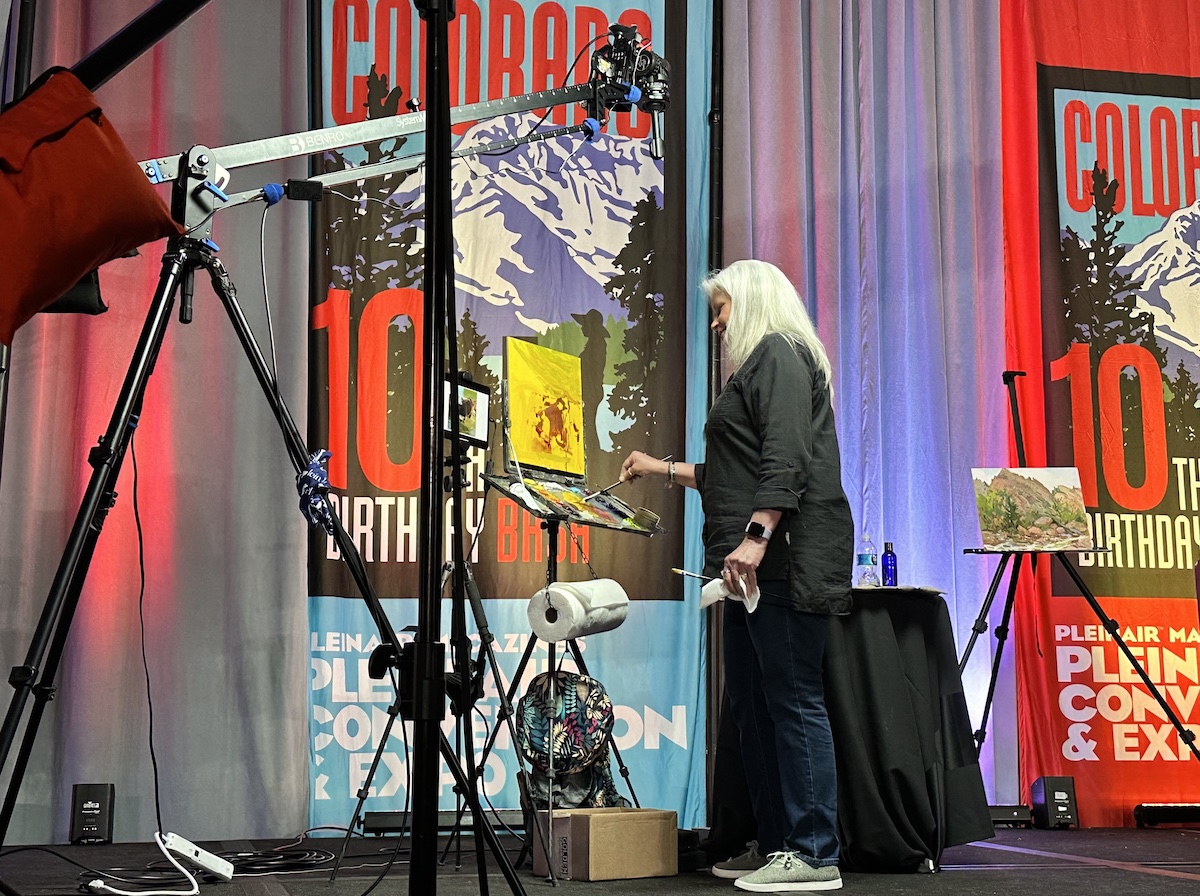
Pastelist Nancy King Mertz is best known for the cityscapes she creates in her hometown of Chicago, the architectural city par excellence. In fact, Chicago boasts the buildings of some of the greatest architects who have marked the history of architecture, such as: Frank Lloyd Wright, Ludwig Mies van der Rohe or Louis Sullivan. To the realization of the basic compositional drawing, which she made by exploiting all sides of the charcoal for the creation of straight lines, she later blocked out the forms by making a distinction between more or less warm tonal and chromatic values depending on the atmosphere. She finished the process by increasing the chromatic intensity in defining details. According to Mertz, the construction of architectural buildings, composed of straight lines and prominent angles, arranged especially in the upper part of the composition, is pure rock and roll for her.
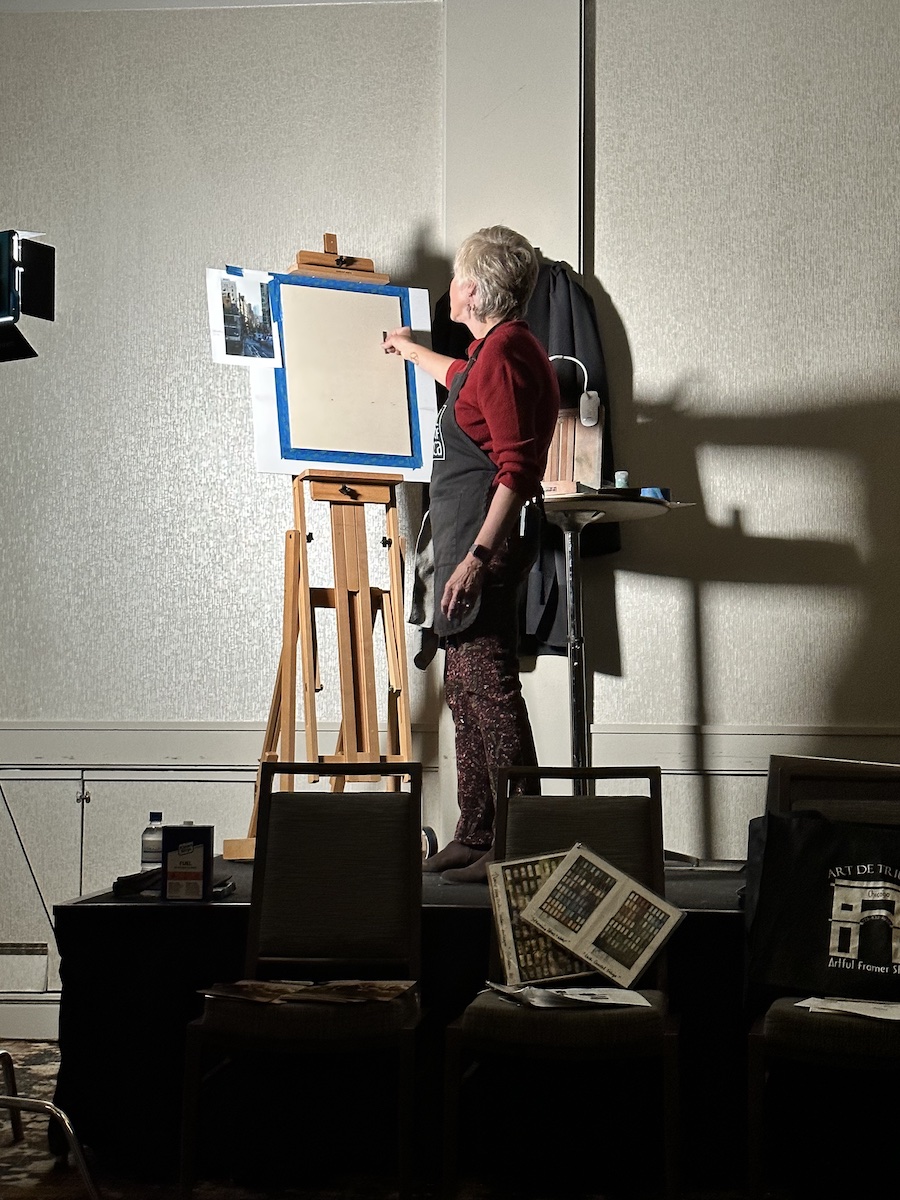
A frame from Nancy King Mertz’ pastel demonstration.In the landscape composition created from a photographic reference, artist Shelby Keefe advocated the importance of not enslaving oneself to the photographic image, which on the contrary should be interpreted by the artist according to her sensibility. In order to create the sense of perspective of the composition Keefe argues that it is important to play with the complementary colors with which the bright colors of the composition are neutralized -except for the focal point which, as such, must convey the viewer’s attention- leaving to the underpainting laid down in the initial phase, the task of emphasizing the compositional harmony.
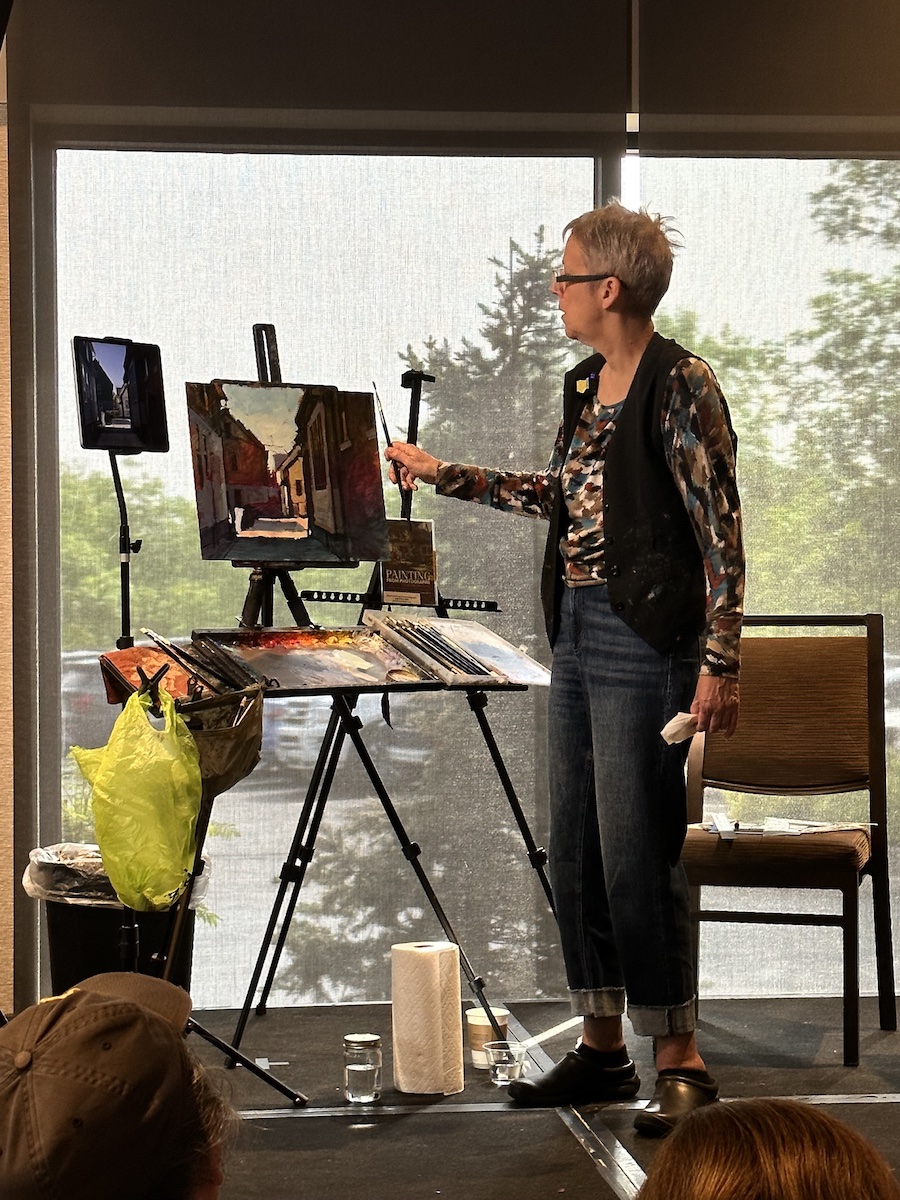
The evening ended with official farewells during the Plein Air Convention end Expo party, which will close tomorrow with the plein air session at the striking Rocky Mountains.
